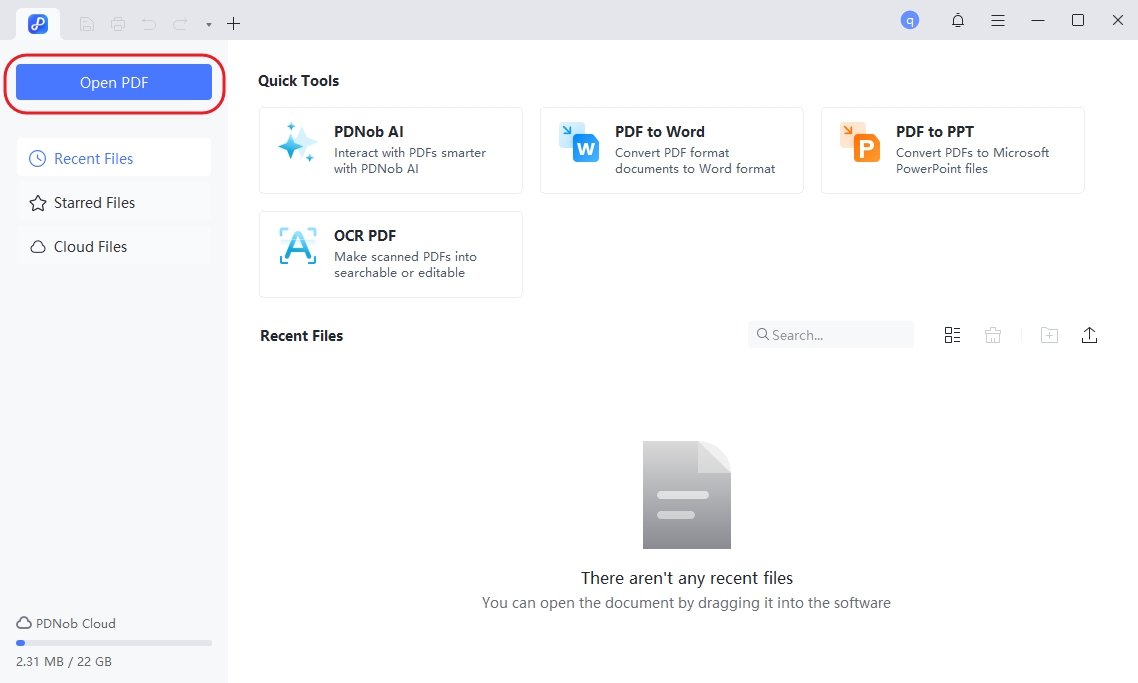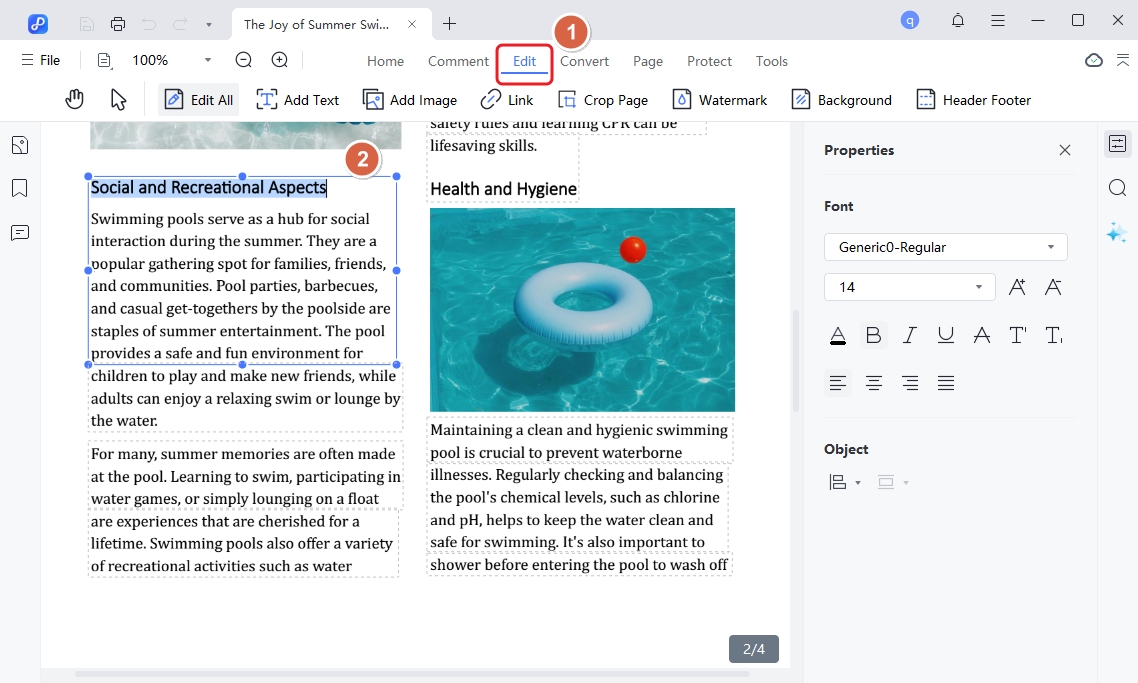The Ultimate All-in-One PDF Editor
Edit, OCR, and Work Smarter.
The Ultimate All-in-One PDF Editor
Edit, OCR, and Work Smarter.
When a crucial batch of scanned invoices is processed by a standard OCR tool, the result is often digital chaos—merged columns, misread numbers, and unstructured gibberish. For developers and data professionals, this bottleneck in automation is a daily frustration.
But what if a single command could transform this mess into clean, structured text? This is the promise of Chandra OCR, an open-source command-line tool built for modern workflows that redefines speed and accuracy in text extraction.
In this guide, we cut through the hype to give you actionable insights into Chandra OCR. You'll learn how accurate it truly is, how to get started in minutes, and how it stacks up against other tools—equipping you to unlock seamless, scriptable document digitization.
Chandra OCR is an advanced Optical Character Recognition (OCR) model built for structured document understanding.
Unlike traditional OCR systems that only recognize plain text, Chandra OCR is designed to understand complex document layouts — including tables, mathematical formulas, handwriting, and multi-column pages.
Developed by the team at DataLab, this model has quickly gained attention on Hugging Face and GitHub for its impressive accuracy and multi-language support.
Most existing OCR tools — such as Tesseract, PaddleOCR, or commercial APIs like Google Vision — focus on text detection.
However, Chandra OCR aims to recreate the document structure, not just the text content. It can output recognized data in Markdown, HTML, or JSON, preserving headings, tables, and image positions.
This makes it particularly valuable for research papers, invoices, scanned books, and academic materials.
When evaluating an OCR tool, marketing claims are meaningless without hard data. The true measure of performance lies in rigorous, independent benchmarking. For Chandra OCR, the results are not just impressive; they signal a fundamental shift in what's possible for document understanding.
This analysis is based on the authoritative olmocr benchmark, a respected standard for evaluating OCR performance, providing a clear and unbiased comparison against the industry's leading models.

The benchmark results reveal Chandra OCR's exceptional capabilities across multiple dimensions:
Chandra OCR outperforms major industry models including GPT-4o, Gemini Flash 2, and other established OCR solutions, demonstrating its superior architecture and training methodology.
Chandra's true prowess is revealed in its performance on specialized, challenging tasks where most models struggle.
Benchmarks are controlled tests; real-world documents are the ultimate proving ground.
This demonstrates its practical accuracy in automating data entry from structured documents.
Let's move from theory to practice. This section provides a foolproof guide to installing Chandra OCR and using it for common tasks.
Important: The method shown in the provided image is incorrect. The only recommended method is installation via PyPI.
Step 1: Create a Virtual Environment
This prevents conflicts between Python packages.
# Create the virtual environment
python -m venv chandra-env
# Activate the virtual environment
# Linux/macOS:
source chandra-env/bin/activate
# Windows Command Prompt:
chandra-env\Scripts\activate.bat
# Windows PowerShell:
chandra-env\Scripts\Activate.ps1Step 2: Install Chandra OCR using pip
pip install chandra-ocrStep 3: Verify the installatio
chandra_ocr --versionThe command chandra-ocr process --input ... shown in the image is incorrect and will not work. The accurate command structure is simpler.
Step 1. Process a single file (e.g., a PDF or image):
chandra_ocr path/to/your/document.pdfThe extracted text will be printed directly to the terminal.
Step 2. Process a file and save the output to a file:
chandra_ocr path/to/your/document.pdf -o ./my_output.txt
# Or using the long form:
chandra_ocr path/to/your/document.pdf --output ./my_output.txtStep 3. Batch process all files in a directory:
chandra_ocr ./path/to/input/documents/ -o ./path/to/output/folder/This command will process all supported files in the documentsfolder and save each result as a separate text file in the outputfolder.
Step 4. Specify a language (e.g., for a document in Simplified Chinese):
# For Simplified Chinese:
chandra_ocr -l chi_sim my_document.pdf
# For multilingual documents (English + German):
chandra_ocr -l eng+deu my_document.pdfNote: The language code (e.g., chi_sim) must correspond to a Tesseract language pack installed on your system.
Chandra OCR stands out when compared to popular OCR solutions like Tesseract, Adobe OCR, and Google Cloud Vision.
To learn more about popular OCR tools and their comparisons, also read: 10 Best Free OCR Software in 2025: Expert Tested & Reviewed.
The best OCR software depends entirely on your specific requirements.
However, for most users seeking a powerful, all-in-one, and user-friendly solution, we most highly recommend Tenorshare PDNob.
While Chandra OCR excels in technical and automated environments, Tenorshare PDNob delivers an unmatched user experience by combining high recognition accuracy with exceptional layout preservation in an intuitive interface.
It provides reliable batch processing capabilities without the complexity of command-line tools, making it the ideal choice for professionals, students, and businesses who prioritize efficiency, ease of use, and consistently excellent results for their everyday document digitization needs.




This is where Chandra OCR transforms from a simple tool into a powerhouse. It excels as the "data acquisition" layer in a larger AI system.
Step 1: Text Extraction with Chandra OCR
We use Chandra OCR to efficiently convert PDFs to text. This can be scripted easily.
# Create the output directory if it doesn't exist
mkdir -p ./text_output
# Batch convert all PDFs in a folder to text files
for pdf in ./reports/*.pdf; do
# Use basename to create a corresponding .txt file for each PDF
output_file="./text_output/$(basename "$pdf" .pdf).txt"
chandra_ocr "$pdf" -o "$output_file"
doneStep 2: Send Text to an AI Model (e.g., on Hugging Face)
Using a simple Python script, we can take the output from Chandra OCR and send it to an AI model.
from transformers import pipeline
import os
# 1. Initialize the summarization pipeline
summarizer = pipeline("summarization", model="facebook/bart-large-cnn")
# 2. Define the path to the text file extracted by Chandra OCR
input_file_path = "./text_output/report_123.txt"
try:
# 3. Safely read the file with error handling
with open(input_file_path, 'r', encoding='utf-8') as file:
extracted_text = file.read()
# 4. Handle long documents by chunking them logically
# This is a simplistic chunker. For production, use a text splitter library.
max_chunk_length = 1024
text_chunks = [extracted_text[i:i+max_chunk_length] for i in range(0, len(extracted_text), max_chunk_length)]
summaries = []
for chunk in text_chunks:
# Summarize each chunk
summary_result = summarizer(chunk, max_length=150, min_length=40, do_sample=False)
summaries.append(summary_result[0]['summary_text'])
# 5. Combine the summaries
final_summary = " ".join(summaries)
# 6. Output the final summary
print("Document Summary:")
print(final_summary)
except FileNotFoundError:
print(f"Error: The file '{input_file_path}' was not found. Please check the path.")
except Exception as e:
print(f"An unexpected error occurred: {e}")Yes, Chandra OCR is open-source software released under the Apache 2.0 license, making it free for both personal and commercial use. You only need to consider hardware costs for running the model.
Chandra OCR provides better document structure understanding out-of-the-box, with superior table recognition and layout preservation. It offers a simpler, more modern interface while maintaining Tesseract's accuracy for text recognition.
You'll need Python 3.8+ and approximately 2GB of RAM for basic operation. GPU acceleration is optional but recommended for batch processing, which requires a CUDA-compatible graphics card with at least 4GB VRAM.
Use the -l parameter to specify languages accurately, preprocess images (increase resolution, fix skew), and utilize the batch processing feature with quality checks. For specialized documents, consider fine-tuning the model on your specific dataset.
Chandra OCR sets a new standard for automated, high-volume document understanding with its superior accuracy and AI pipeline integration.
For users seeking a more accessible solution, Tenorshare PDNob offers a powerful, all-in-one alternative with an intuitive interface that simplifies PDF editing and OCR tasks.
Ultimately, the choice depends on your specific needs for automation versus user-friendliness. Both tools effectively solve the critical challenge of transforming unstructured documents into usable data.


PDNob PDF Editor Software- Smarter, Faster, Easier
 The END
The END
I am PDNob.
Swift editing, efficiency first.
Make every second yours: Tackle any PDF task with ease.
As Leonardo da Vinci said, "Simplicity is the ultimate sophistication." That's why we built PDNob.
then write your review
Leave a Comment
Create your review for Tenorshare articles
By Jenefey Aaron
2025-12-12 / OCR